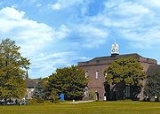
Direct grant grammar school
Encyclopedia
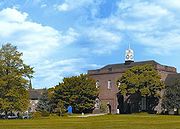
Secondary school
Secondary school is a term used to describe an educational institution where the final stage of schooling, known as secondary education and usually compulsory up to a specified age, takes place...
in England and Wales
England and Wales
England and Wales is a jurisdiction within the United Kingdom. It consists of England and Wales, two of the four countries of the United Kingdom...
between 1945 and 1976 funded partly by the state and partly through private fees.
One quarter of the places in these schools were directly funded by central government with the rest attracting fees, some paid by the Local Education Authority
Local Education Authority
A local education authority is a local authority in England and Wales that has responsibility for education within its jurisdiction...
and some by private pupils.
On average they received just over half of their income from the state.
The status was introduced by the Education Act 1944
Education Act 1944
The Education Act 1944 changed the education system for secondary schools in England and Wales. This Act, commonly named after the Conservative politician R.A...
as a modification of an existing direct grant scheme to privately endowed schools.
There were 179 direct grant grammar schools, which together with over 1200 grammar school
Grammar school
A grammar school is one of several different types of school in the history of education in the United Kingdom and some other English-speaking countries, originally a school teaching classical languages but more recently an academically-oriented secondary school.The original purpose of mediaeval...
s maintained by local authorities formed the most academic tier of the Tripartite System
Tripartite System
The Tripartite System was the arrangement of state funded secondary education between 1944 and the 1970s in England and Wales, and from 1947 to 2009 in Northern Ireland....
.
They varied greatly in size and composition, but on average achieved higher academic results than either maintained grammar schools or independent schools.
When state secondary education was reorganised on comprehensive lines in the 1970s, the direct grant was phased out and the schools required to choose between becoming maintained comprehensive schools or fully independent school
Independent school (UK)
An independent school is a school that is not financed through the taxation system by local or national government and is instead funded by private sources, predominantly in the form of tuition charges, gifts and long-term charitable endowments, and so is not subject to the conditions imposed by...
s.
Forty-five schools, almost all Roman Catholic, joined the state system, and a few closed.
The rest (including all the secular schools) became independent, and mostly remain as highly selective independent schools.
Origins
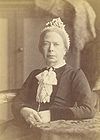
During this time, secondary provision expanded and adjusted to growing demand.
At the start of that century, some boarding schools like Eton College
Eton College
Eton College, often referred to simply as Eton, is a British independent school for boys aged 13 to 18. It was founded in 1440 by King Henry VI as "The King's College of Our Lady of Eton besides Wyndsor"....
and Winchester College
Winchester College
Winchester College is an independent school for boys in the British public school tradition, situated in Winchester, Hampshire, the former capital of England. It has existed in its present location for over 600 years and claims the longest unbroken history of any school in England...
thrived educating the sons of the aristocracy, but most endowed grammar school
Grammar school
A grammar school is one of several different types of school in the history of education in the United Kingdom and some other English-speaking countries, originally a school teaching classical languages but more recently an academically-oriented secondary school.The original purpose of mediaeval...
s were in decline, their classical curricula seen as irrelevant to the industrial age.
These schools were reformed under the Endowed Schools Act 1869
Endowed Schools Act 1869
The Endowed Schools Act 1869 was introduced in Britain during William Ewart Gladstone’s first ministry.An Endowed Schools Commission was created to draw up new schemes of distribution for schools which received funding from the government; previous endowments had been seen as poorly distributed and...
, which also led to many endowments being diverted to the creation of girls' schools.
In the meantime a range of other schools had appeared.
After the Roman Catholic Relief Act 1829 and mid-century Irish immigration, Catholic teaching orders from Ireland and mainland Europe began to establish their own grammar schools.
New proprietary schools were established, initially as joint-stock companies
Joint stock company
A joint-stock company is a type of corporation or partnership involving two or more individuals that own shares of stock in the company...
, converting to charities if they were successful.
One of the largest such companies was the Girls' Public Day School Company (later Trust), set up to provide an affordable academic education for girls, which had established 32 schools by 1894.
In the latter part of the century, many of the less wealthy schools received annual grants from the Department of Science and Art and from their county councils.
The grant system was restructured when the Board of Education
Board of education
A board of education or a school board or school committee is the title of the board of directors or board of trustees of a school, local school district or higher administrative level....
was created in 1901 to fund early secondary schools, and the Education Act 1902
Education Act 1902
The Education Act 1902 , also known as Balfour's Act, is an Act of the Parliament of the United Kingdom affecting education in England and Wales. At the time of passage of the Act, the Conservative Party was in power...
gave counties
Counties of the United Kingdom
The counties of the United Kingdom are subnational divisions of the United Kingdom, used for the purposes of administrative, geographical and political demarcation. By the Middle Ages counties had become established as a unit of local government, at least in England. By the early 17th century all...
and county borough
County borough
County borough is a term introduced in 1889 in the United Kingdom of Great Britain and Ireland , to refer to a borough or a city independent of county council control. They were abolished by the Local Government Act 1972 in England and Wales, but continue in use for lieutenancy and shrievalty in...
s responsibility for schools, designating them as Local Education Authorities
Local Education Authority
A local education authority is a local authority in England and Wales that has responsibility for education within its jurisdiction...
(LEAs).
Secondary schools controlled by voluntary bodies could receive a grant from either the Board of Education or their local authority, or both.
In return they were required to meet the Board's regulations, and were subject to the same system of inspections as state-funded schools.
Under the Education (Administrative Provisions) Act 1907
Education (Administrative Provisions) Act 1907
The 1907 Education Act was an Act of Parliament passed by the Liberal government as part of their Liberal reforms package of welfare reforms. The Act set up school medical services run by local government....
, secondary schools in receipt of grant were required to admit a specified proportion of their intake, usually 25%, free of charge from state elementary schools.
Suitable pupils were selected using a scholarship examination.
Circular 1381, a directive issued by the Board of Education in 1926, required that schools choose a single source of grant: they could receive a "direct grant" from central government, or be "grant-aided" by their local authority.
By 1932 there were 240 secondary schools receiving a direct grant, compared with 1138 aided by local authorities.
Although this division was intended purely as an administrative convenience, local authorities gradually gained more influence over the schools they aided, in part because of the schools' weak financial position during the Great Depression
Great Depression in the United Kingdom
The Great Depression in the United Kingdom, also known as the Great Slump, was a period of national economic downturn in the 1930s, which had its origins in the global Great Depression...
.
The Depression, and the falling birth rate in the pre-war years, had also weakened independent schools and schools receiving the direct grant.
At the same time, the state-funded sector had grown to the point where universal secondary education seemed achievable, and changes in society had made the idea more popular.
Proposals were made for a reorganisation of the maintained sector, including a new accommodation with the voluntary schools.
In response, the Headmasters' Conference persuaded the President of the Board of Education, R.A. Butler, to establish a commission under Lord Fleming in July 1942 "to consider means whereby the association between the Public Schools ... and the general education system of the country could be developed and extended".
Direct Grant Scheme
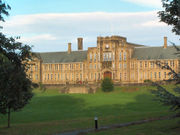
Education Act 1944
The Education Act 1944 changed the education system for secondary schools in England and Wales. This Act, commonly named after the Conservative politician R.A...
aimed to introduce a universal system of secondary education for England and Wales.
Under the Tripartite System
Tripartite System
The Tripartite System was the arrangement of state funded secondary education between 1944 and the 1970s in England and Wales, and from 1947 to 2009 in Northern Ireland....
, there were to be three types of schools, with pupils sitting an eleven plus exam to determine which type of school they would be sent to.
The most academic tier would be the grammar school
Grammar school
A grammar school is one of several different types of school in the history of education in the United Kingdom and some other English-speaking countries, originally a school teaching classical languages but more recently an academically-oriented secondary school.The original purpose of mediaeval...
, and the Act revised the terms of the direct grant to operate alongside LEA-maintained grammar schools, many of which were former LEA-aided schools.
The latter schools, unable to cope with the costs of the reorganisation required by the 1944 Act, had been offered the status of voluntary controlled
Voluntary controlled school
A voluntary controlled school is a state-funded school in England, Wales and Northern Ireland in which a foundation or trust has some formal influence in the running of the school...
or voluntary aided school
Voluntary aided school
A voluntary aided school is a state-funded school in England and Wales in which a foundation or trust owns the school buildings, contributes to building costs and has a substantial influence in the running of the school...
s, under which the state would pay all their running costs and all or most of their capital costs.
They were thus fully integrated into the state system.
The new Direct Grant Scheme was a modification of proposals in the Fleming Report of 1944.
A direct grant grammar school would provide 25% of its places free of charge to children who had spent at least 2 years in maintained primary schools, and would reserve at least a further 25% of places to be paid for by the LEA if required.
The remaining ("residuary") places would attract fees, but no child would be admitted unless they had achieved the required standard in the eleven plus.
The schools would be inspected by Her Majesty's Inspectors of Schools
Ofsted
The Office for Standards in Education, Children's Services and Skills is the non-ministerial government department of Her Majesty's Chief Inspector of Schools In England ....
, would have one third of their governing bodies appointed by the LEA, and would require the approval of the Secretary of State to raise fees or carry out building work.
The scheme was attractive to most of the direct grant schools.
Of the 231 secondary schools receiving direct grant in 1945, 196 applied to join the new scheme, with the rest becoming independent school
Independent school (UK)
An independent school is a school that is not financed through the taxation system by local or national government and is instead funded by private sources, predominantly in the form of tuition charges, gifts and long-term charitable endowments, and so is not subject to the conditions imposed by...
s.
In addition 31 grant-aided schools applied to join the scheme.
Of these, 164 schools (including four formerly grant-aided schools) were accepted as direct grant grammar schools.
The list was re-opened between 1957 and 1961, when 44 applications were received, of which 15 were accepted.
There were therefore 179 direct grant grammar schools, alongside over 1200 maintained grammar schools.
Beside the Direct Grant Scheme, the Act also made provision for LEAs to fund places at independent schools in areas where there was a shortage of appropriate places in maintained schools.
For example, there might be a lack of selective places, or of selective places in Roman Catholic schools.
In the late 1960s, 56 independent schools had over 25% of their places funded by LEAs in this way, with seven of them over 75% LEA-funded.
Characteristics of the schools
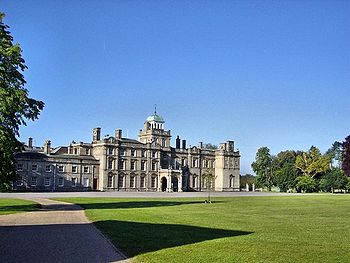
For A-level students, these proportions rose to 6.2% and 14.7% respectively.
Before Culford School
Culford School
Culford School is a coeducational HMC and IAPS public school for pupils age 3–18. Founded in 1881, it is situated in Culford, four miles north of Bury St Edmunds in Suffolk, England.-History:...
became coeducational in 1972, all but 2 of the schools were single sex, with a slight majority of girls' schools.
There were 56 Roman Catholic schools, 14 Church of England
Church of England
The Church of England is the officially established Christian church in England and the Mother Church of the worldwide Anglican Communion. The church considers itself within the tradition of Western Christianity and dates its formal establishment principally to the mission to England by St...
and 6 Methodist.
Many of the schools were in the north of England, with 46 in the historic county of Lancashire (including Manchester) and 18 in the West Riding of Yorkshire
West Riding of Yorkshire
The West Riding of Yorkshire is one of the three historic subdivisions of Yorkshire, England. From 1889 to 1974 the administrative county, County of York, West Riding , was based closely on the historic boundaries...
, while there were only 7 in inner London and 4 in Wales.
In 1961, an average of 59% of pupils at direct grant grammar schools were state-funded, but the proportion also varied greatly between schools.
Direct grant schools had similar teacher/pupil ratios to the maintained grammar schools, as their fees were regulated to match costs at the latter schools.
The proportion of teachers with first and second class degrees was slightly lower than in their maintained counterparts.
The principal difference from the maintained schools was greater freedom from LEA influence.
Although there was much variation, these schools as a group were middle-class institutions, with many tending to move closer to the independent schools in social composition.
On average, three-quarters of pupils came from white-collar homes, including 60% with fathers in management or the professions, while only 7% were children of semi-skilled or unskilled workers.
On average, the intake of the schools was also more academically selective than either maintained grammar schools or independent schools.
Their results were correspondingly high, with 60% of their pupils staying on to age 18 and 38% going on to university, significantly greater proportions than either of the other groups of schools.
Types of schools
There was a great deal of variation between direct grant grammar schools.According to the Donnison Report (discussed in the next section), the schools were of four types, though the boundaries between them were not always clear-cut.
The archetype of the direct grant grammar school was the largest, Manchester Grammar School
Manchester Grammar School
The Manchester Grammar School is the largest independent day school for boys in the UK . It is based in Manchester, England...
, whose High Master from 1945 to 1962, Eric James
Eric James, Baron James of Rusholme
Eric John Francis James, Baron James of Rusholme was a prominent British educator.He was educated at York Place Secondary School, Brighton, Taunton's School, Southampton and Queen's College, Oxford. He taught science at Winchester College from 1933 to 1945, and was High Master of The Manchester...
(elevated to the peerage in 1959), was an outspoken advocate of the "meritocracy".
In 1968 the school sent 77% of its boys on to university, a rate surpassed only by the independent Winchester College
Winchester College
Winchester College is an independent school for boys in the British public school tradition, situated in Winchester, Hampshire, the former capital of England. It has existed in its present location for over 600 years and claims the longest unbroken history of any school in England...
.
Close behind were such schools as Bradford Grammar School
Bradford Grammar School
Bradford Grammar School is a co-educational, independent school in Frizinghall, Bradford, West Yorkshire. Headmaster, Stephen Davidson is a member of the Headmasters' and Headmistresses' Conference . The school was founded in 1548 and granted its Charter by King Charles II in 1662...
, Leeds Grammar School
Leeds Grammar School
Leeds Grammar School was an independent school in Leeds established in 1552. In August 2005 it merged with Leeds Girls' High School to form The Grammar School at Leeds. The two schools physically united in September 2008....
, Haberdashers' Aske's School
Haberdashers' Aske's Boys' School
The Haberdashers' Aske's Boys' School is a British independent school for boys aged 4–19. It is a member of the Headmasters' and Headmistresses' Conference and of the Haileybury Group....
and Latymer Upper School
Latymer Upper School
Latymer Upper School, founded by Edward Latymer in 1624, is a selective independent school in Hammersmith, West London, England, lying between King Street and the Thames. It is a day school for 1,130 pupils – boys and girls aged 11–18; there is also the Latymer Preparatory School for boys and girls...
.
Donnison called these "regional schools": large, highly academically selective day schools with large sixth forms, located near large cities, and mostly boys' schools belonging to the Headmaster's Conference.
A large girls' school of similar academic attainment was North London Collegiate School
North London Collegiate School
North London Collegiate School is an independent day school for girls founded in 1850 in Camden Town, and now in the London Borough of Harrow.The Good Schools Guide called the school an "Academically stunning outer London school in a glorious setting which, in 2003, demonstrated its refusal to rest...
, which had been founded in 1850 by Frances Buss
Frances Buss
Frances Mary Buss was a headmistress and an English pioneer of women's education.The daughter of Robert William Buss, a painter and etcher, and his wife, Frances Fleetwood, Buss was one of six of their ten children to survive into adulthood...
.
These schools achieved university admission rates that rivalled the older public school
Public School (UK)
A public school, in common British usage, is a school that is neither administered nor financed by the state or from taxpayer contributions, and is instead funded by a combination of endowments, tuition fees and charitable contributions, usually existing as a non profit-making charitable trust...
s, which in turn moved to raise their academic standards for admission, and to increase their focus of academic achievement.
With their high profile, such schools formed the popular image of a direct grant grammar school, but they accounted for only about a quarter of them.
The second group consisted of 30 schools (23 for boys and 7 for girls) with a significant proportion (over 25%) of boarders.
Boarders made up the majority of pupils at 15 schools (all but one for boys),
including five of the six Methodist schools.
Boarding schools tended to be smaller and less academically selective than other direct grant schools, and to take a larger proportion of fee-paying pupils.
They also tended to be more socially selective, with nearly three quarters of their pupils having fathers in management or the professions.
Roman Catholic schools made up nearly a third of the direct grant schools (19 for boys and 37 for girls).
They were predominantly day schools, though 10 of them took a small proportion of boarders.
Their fees were about 15% lower than other direct grant grammars, and they tended to take a much higher proportion of LEA-funded pupils. In 1968, 40 of these schools took over 80% of their pupils from their LEAs; the average proportion was 86%.
They also tended to be more socially mixed, with 37% of their pupils from managerial and professional homes and 16% children of semi-skilled or unskilled workers.
These schools were thus similar to the LEA-maintained Roman Catholic grammar schools, whom they outnumbered.
Lacking endowments and having lower fee income, they were less financially secure than other direct grant grammars.
The remainder were non-denominational local grammar schools, often with an intake more able on average than in maintained grammar schools, but covering a broader range.
These included the 23 schools of the Girls' Public Day School Trust (now the Girls' Day School Trust
Girls' Day School Trust
The Girls' Day School Trust is a group of 26 independent schools - 24 schools and two Academies - in England and Wales, catering for pupils aged 3 to 18. It is the largest group of independent schools in the UK, and educates 20,000 girls each year...
).
Comprehensive reorganisation
During the post-War period, many parts of the world moved from selective education to comprehensive schoolComprehensive school
A comprehensive school is a state school that does not select its intake on the basis of academic achievement or aptitude. This is in contrast to the selective school system, where admission is restricted on the basis of a selection criteria. The term is commonly used in relation to the United...
s catering for children of all abilities.
Dissatisfaction with the Tripartite System grew during the 1950s, with concern over the harsh division of the school population at the age of 11, and the loss to the economy of the "submerged three-quarters" in secondary modern school
Secondary modern school
A secondary modern school is a type of secondary school that existed in most of the United Kingdom from 1944 until the early 1970s, under the Tripartite System, and was designed for the majority of pupils - those who do not achieve scores in the top 25% of the eleven plus examination...
s.
Experiments with comprehensive schools spread from Anglesey
Anglesey
Anglesey , also known by its Welsh name Ynys Môn , is an island and, as Isle of Anglesey, a county off the north west coast of Wales...
to the Midlands
English Midlands
The Midlands, or the English Midlands, is the traditional name for the area comprising central England that broadly corresponds to the early medieval Kingdom of Mercia. It borders Southern England, Northern England, East Anglia and Wales. Its largest city is Birmingham, and it was an important...
and Yorkshire
Yorkshire
Yorkshire is a historic county of northern England and the largest in the United Kingdom. Because of its great size in comparison to other English counties, functions have been increasingly undertaken over time by its subdivisions, which have also been subject to periodic reform...
.
In 1964, a Labour
Labour Party (UK)
The Labour Party is a centre-left democratic socialist party in the United Kingdom. It surpassed the Liberal Party in general elections during the early 1920s, forming minority governments under Ramsay MacDonald in 1924 and 1929-1931. The party was in a wartime coalition from 1940 to 1945, after...
government was elected promising "to reorganise the State secondary schools on comprehensive lines".
In the following year, the Department of Education and Science distributed Circular 10/65
Circular 10/65
Circular 10/65 is a Government circular issued in 1965 by the Department of Education and Science requesting Local Education Authorities in England and Wales to begin converting their secondary schools to the Comprehensive System. For most of England and Wales, it marked the abolition of the old...
, requesting that Local Education Authorities prepare plans for such a reorganisation of their schools.
The Circular also requested consultation between LEAs and direct grant schools on their participation in a comprehensive system.
For this reason, direct grant schools were excluded from consideration by the Public Schools Commission set up in 1965, even though 152 of them would otherwise have fallen within its remit.
There was little progress in the local negotiations proposed in the Circular.
Two Catholic girls' schools, St Anne's Convent School
St. Anne's Catholic School (Southampton)
St. Annes Catholic School is a secondary school in Southampton, England for girls. The school was previously known as Saint Anne's Convent School. The school is situated close to the city centre, and attracts pupils from all round the city...
, Southampton and St Anthony's School
St. Anthony's Girls School
St. Anthony's is an all-girls secondary school and sixth form college situated in Sunderland, North East England.-Admission Policy 2010:The Governing Body determines the admissions to St. Anthony's. The criteria for admission reflects the nature of the foundation of the School by the Sisters of...
, Sunderland, converted to a fully comprehensive intake, expanding to over 1000 pupils each.
A few others proposed minor adjustments, but the vast majority were unchanged.
In view of this lack of progress, the Public Schools Commission was asked on October 1967 to add direct grant schools to its investigation.
The Commission, now chaired by David Donnison, issued its second report in 1970, concluding that "Grammar schools of the traditional kind cannot be combined with a comprehensive system of education: we must choose what we want. Fee-paying is not compatible with comprehensive education."
They recommended that the schools choose between becoming voluntary aided
Voluntary aided school
A voluntary aided school is a state-funded school in England and Wales in which a foundation or trust owns the school buildings, contributes to building costs and has a substantial influence in the running of the school...
comprehensives and full independence, but the Conservative
Conservative Party (UK)
The Conservative Party, formally the Conservative and Unionist Party, is a centre-right political party in the United Kingdom that adheres to the philosophies of conservatism and British unionism. It is the largest political party in the UK, and is currently the largest single party in the House...
s came to power before any action had been taken.
Meanwhile, a trickle of schools had begun to leave the scheme, starting with Trinity School of John Whitgift
Trinity School of John Whitgift
The Trinity School of John Whitgift, usually referred to as Trinity School, is a British independent boys' day school with a co-educational Sixth Form, located in Shirley Park, Croydon. The current building was constructed in 1965 on the site of the former Shirley Hotel...
, which became independent in 1968, but still had half its places funded by the LEA.
It was followed in 1970 by Oakham School
Oakham School
Oakham School is a British co-educational independent school in the historic market town of Oakham in Rutland, accepting around 1,000 pupils, aged from 10 to 18, both male and female, as boarders and day pupils . The Good Schools Guide called the school "a privileged but unpretentious and...
, which became co-educational in the following year,
and Queen Victoria High School, which merged with The Cleveland School to form Teesside High School
Teesside High School
Teesside High School is an independent school in Eaglescliffe, near Stockton-on-Tees. It takes students aged from three to eighteen and is a diamond school, meaning the primary school and sixth form are coeducation while girls and boys are taught separately at the secondary level.- History :The...
.
A respite was provided in the early 1970s, when Margaret Thatcher
Margaret Thatcher
Margaret Hilda Thatcher, Baroness Thatcher, was Prime Minister of the United Kingdom from 1979 to 1990...
, the Conservative Education Secretary, raised the level of grant, which had been lowered by the Labour government.
Abolition and legacy
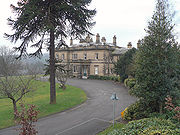
Of the 174 remaining direct grant grammar schools,
51 (two Church of England and the rest Catholic) applied to join the state sector, of which 46 were accepted.
These schools had become dependent on state funding, and the move to comprehensive education was also supported by the Roman Catholic hierarchy, often over the objections of those connected with the schools.
One school, St. Joseph's College, Stoke-on-Trent
St. Joseph's College, Stoke-on-Trent
St. Joseph’s College is a mixed Roman Catholic 11–18 school in Trent Vale, Stoke on Trent, Staffordshire. The school is based around a Grade II listed building which was previously a residential property before it was bought by the Christian Brothers in 1931.-History:The school was founded by...
, was approved to join the state system, but became independent instead following a campaign by parents.
Elsewhere the plans proceeded over local objections, with schools closing or becoming comprehensive schools or sixth form colleges, often by merging with other schools.
The remaining schools, including all of the secular ones, either closed or became independent when their grant was phased out as the remaining state-funded pupils left.
This coincided with the mid 1970s recession, a difficult time for independent schools but doubly so for the former direct grant schools, which had just lost 25–50% of their intake.
Many local boys' schools became coeducational to replace the lost places.
However the independent sector soon recovered, and prospered without competition from state grammar schools.
An echo of the direct grant, the Assisted Places scheme was introduced by the Conservative government of Margaret Thatcher
Margaret Thatcher
Margaret Hilda Thatcher, Baroness Thatcher, was Prime Minister of the United Kingdom from 1979 to 1990...
in 1981, lasting until 1997.
Approximately two-thirds of these places were held at former direct grant grammar schools.
From 1993 a small number of Roman Catholic former direct grant schools entered the state sector as grant-maintained school
Grant-maintained school
Grant-maintained schools were state schools in England and Wales between 1988 and 1998 that had opted out of local government control, being funded directly by a grant from central government...
s.
A few secular schools have subsequently become academies.
Those that remain independent are typically highly selective, and have strong academic reputations.
In 2001, they included 61 of the 100 highest performing independent day schools.
No longer a bridge between state and private sectors, these schools have become part of a flourishing independent sector now sharply distinguished from the state system, a situation decried by the Sutton Trust
Sutton Trust
The Sutton Trust is an educational charity in the United Kingdom which aims to provide educational opportunities to young people from non-privileged backgrounds...
as "educational apartheid".

